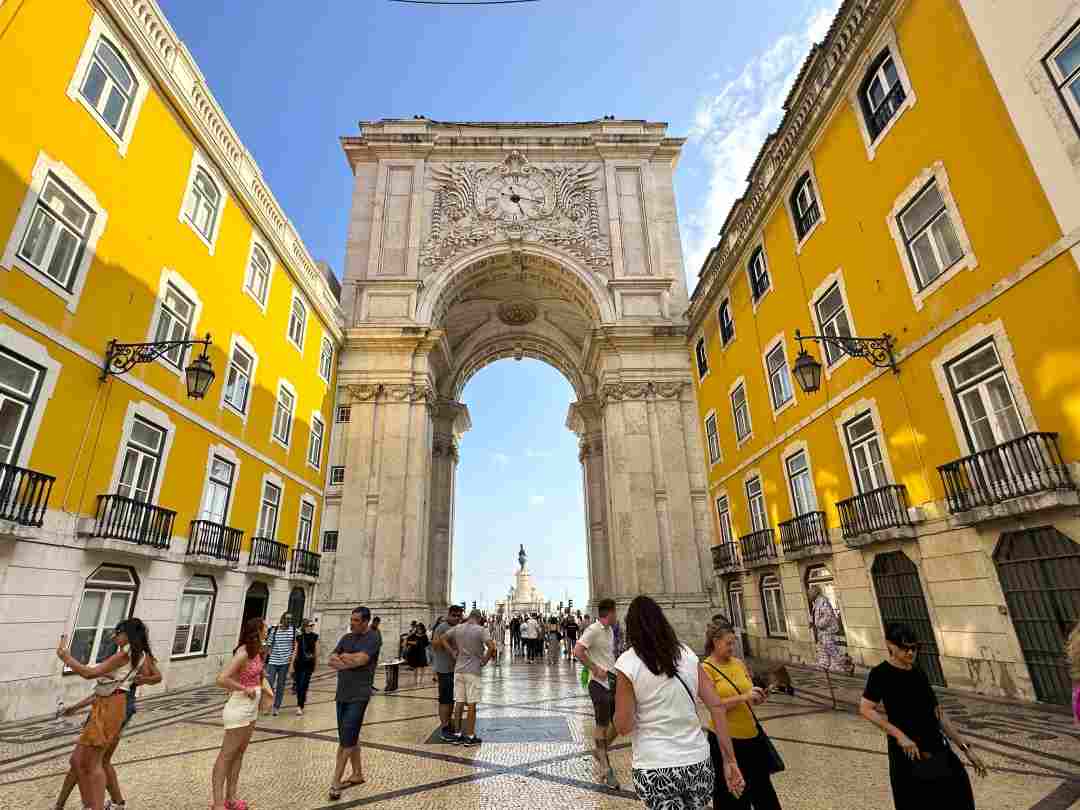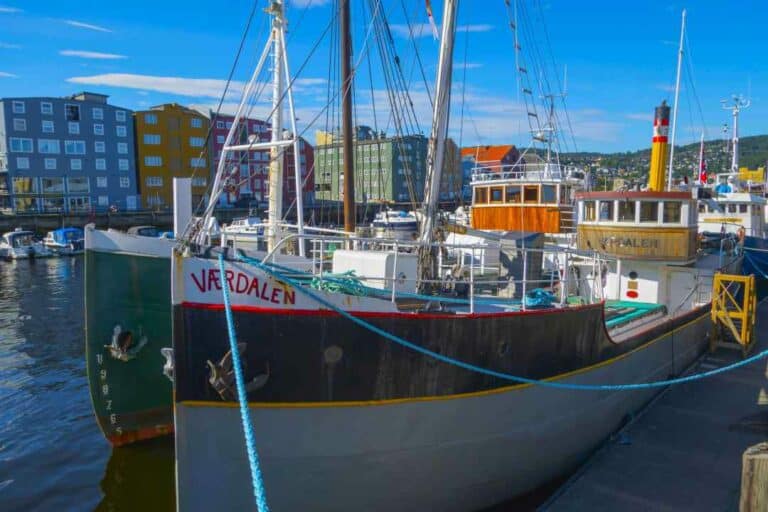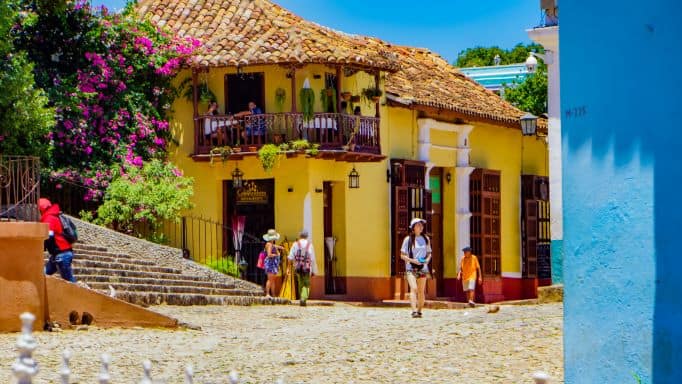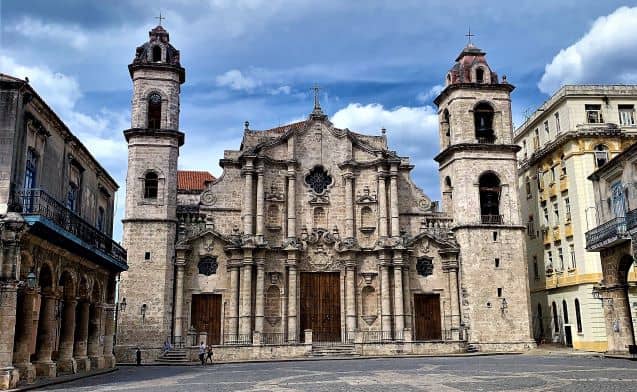Like an amphitheater facing the sparkling Tagus River stage, the Portuguese capital is said to spread across seven hills, the seven hills of Lisbon, that have shaped not just its geography but its soul.
I recently traveled there as a solo female traveler (my favorite way to travel), and spent days walking up and down and across the seven hills.
My first morning in Lisbon in 10 years (!), I started my exploration on foot up and down and up and down, each area with a slightly different atmosphere than the other. It is a bit tricky to get the overview at first, but if you stay for a few days, you will soon get the hang of it.
You can think of Rome’s seven hills (yes, that’s where Lisbon gets its nickname from), but add the sea breeze and views, a dash of melancholic fado music, and wrap it all in stunning azulejo tiles that are everywhere.

Ultimate Guide to Seven Hills Lisbon
In this guide, I’ll walk you through each hill (pun intended). Find out where to catch your breath with a glass of Vinho Verde, where you find the best pastry, food, and viewpoints.
São Jorge Hill has its remarkable medieval castle, and Chagas harbors the pulsing nightlife of Bairro Alto. Santa Catarina has views that’ll make your heart skip a beat (not just from the climb) – each hill in Lisbon has its uniqueness.
While walking these elevations might make you wish you’d done a squat or two the last few months, they’re also what gives Lisbon its unique atmosphere and incredible viewpoints.
Take advantage of that the steep streets force most of us (me, at least) to slow down our pace, notice details like the pattern of centuries-old tiles and intricate ornaments, and enjoy the beautiful historic surroundings.
Also read: 28 Best Things To Do Alone In Lisbon
1. São Jorge Hill
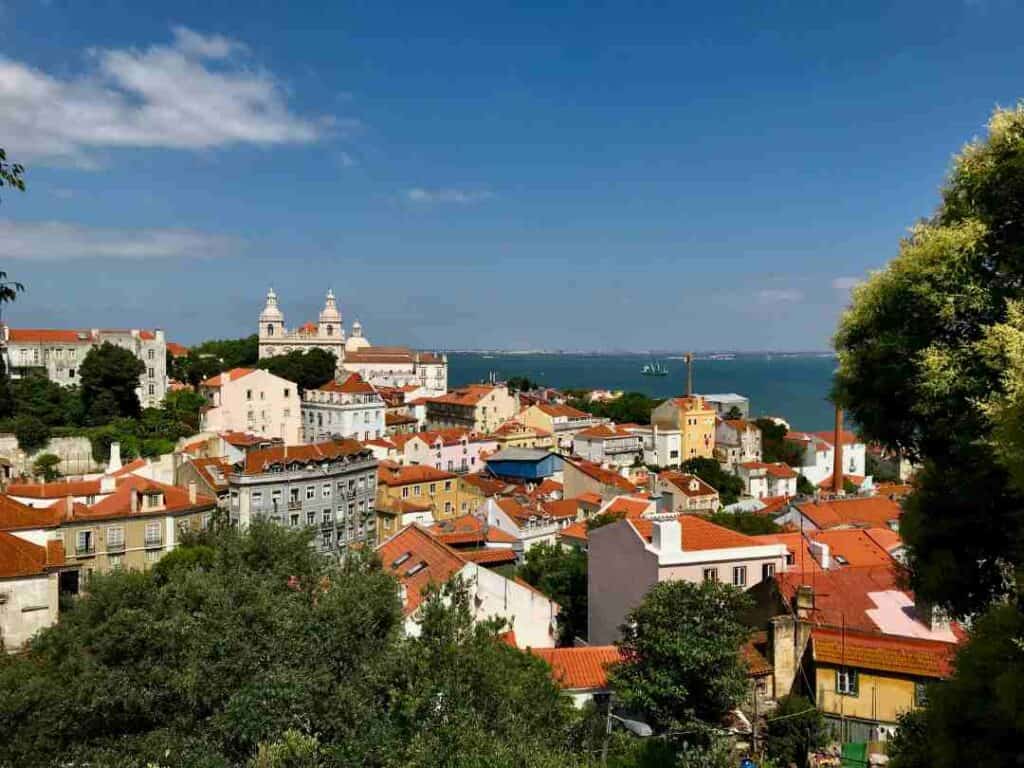
Standing atop São Jorge Hill, you are literally on top of Lisbon. This is the home of the Alfama district, where “everyone” wants to visit a miradouro, viewpoint, and the entire month of July is one long fiesta.
São Jorge is basically the king of all seven hills, and once you see the view, you’ll get why.
The star of the show here is São Jorge Castle, or Castelo de São Jorge, a massive fortress that’s been watching over Lisbon since forever (well, technically since the 11th century).
If the walls could talk, there are ancient stone walls here that have seen more history than your history books combined, and peacocks casually strutting around like they own the place (which, let’s be honest, they kind of do).
You can actually walk along the castle walls if you manage not to get too distracted by the jaw-dropping views of the Tagus River below and the city’s red rooftops stretching out into infinity.
Get here early in the morning to dodge the crowds (and lines), or come just before sunset for the most spectacular ambiance if you like to share the experience.
The surrounding Alfama neighborhood is pure magic, too – all narrow, winding streets and tiny squares where old ladies still hang laundry between buildings.
Best viewpoints from Sao Jorge Hill
- Castelo de Sao Jorge itself
- Miraduro do Recolhimento
- Miraduro do Santa Luzia
How to get there
You find Sao Jorge Hill in the eastern part of the city, surrounded by Alfama below, and Baixa de Lisboa to the west, which is a few altitude meters from the marina.
Walk, get a tuk-tuk, or take tram 28E from R. Conceição to Miraduro Santa Luzia, or bus 737.
You should check out the Lisboa card when you go, that will get you lots of deals and free stuff, including city transport!
📍 Click here for the Lisboa Card to get you where you want to go in Lisbon!
2. São Vicente Hill

Okay, let me tell you about São Vicente Hill – the “sophisticated” one of the Lisbon Hills.
This is where you’ll find the National Pantheon, the Church of Santa Engrácia. This incredible white dome took 284 years to build.
Looking at it, you can only imagine the medieval dramas and stories these walls must have witnessed!
Though not a military structure, São Vicente Hill holds historical significance for Portugal’s Christian heritage, particularly after the Reconquista when Portugal reclaimed territories from the Moors (Muslims from North Africa).
The hill is home to the historic Monastery of São Vicente de Fora, which is huge and has incredible tile panels telling stories that will bring history completely alive.
Another thing you dont want to miss here is the Feira da Ladra (literally “Thieves’ Market”) on Tuesdays and Saturdays.
This is a super-cool flea market that has become one of the local attractions where you can find anything from vintage Portuguese tiles to vinyl records.
An old saying is that Sao Vicente Hill is “Where Saint Vincent keeps watch.” Saint Vincent is the patron saint of Lisbon, and this expression refers to the belief that from the high vantage of São Vicente, the saint watches over the city.
The streets are steep (your calves will hate you, BUT), the views are insane, and there’s this amazing vibe you definitely will pick up on.
Viewpoints on Sao Vicente Hill
- Miraduro da Graça in the Graça neighborhood
Also read: The Ultimate Guide: Is Lisbon Portugal Worth Visiting (Solo)? (Spoiler: Absolutely!)
3. Sant’Ana Hill: Where Old Meets New

Over to Sant’Ana Hill, an area you can think of it as Lisbon’s fancy pants district.
This is where the famous Avenida da Liberdade struts its stuff, looking like Lisbon’s answer to the Champs-Élysées and the beautiful garden of Miradouro Jardim do Torel.
It’s interesting how this hill went from being super humble back in the day to a high-end shopping district nowadays, which is home to super fancy designer stores.
This historic hilltop district, known for its beautiful views, old-world charm, and architectural appeal, has attracted in recent years.
Renovation of historic buildings, investment in luxury apartments, and the growth of boutique hotels and upscale dining options have helped raise its profile.
The cool thing about Sant’Ana is how it’s managed to keep it real despite urban development and all the glitz.
You’ve got your high-end boutiques, but around any corner, you might also stumble upon a tiny family-run restaurant serving the best bacalhau you’ve ever tasted.
Sant’Ana Hill’s central location, close to vibrant neighborhoods like Avenida da Liberdade and Baixa, makes it super popular for those seeking a luxurious yet authentic Lisbon experience.
The whole area has this vibrant mix of old-school charm and modern swagger.
📍 Click the link to check out my favorite co-work hostel Selina Secret Garden in Lisbon with amazing reviews, pool, working area, free yoga, rooftop bar, and more!
4. Santo André Hill: The Local’s Favorite
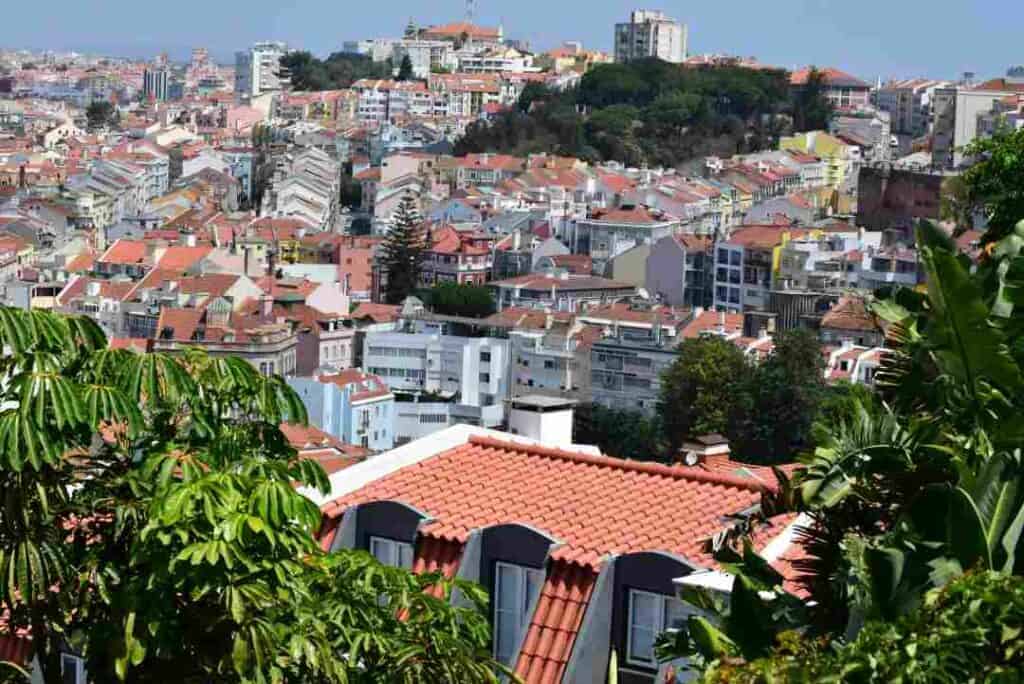
Santo André is a really laid-back, cool part of Lisbon.
Located in the heart of Lisbon’s Graça neighborhood, this hill has a quiet, traditional atmosphere with narrow streets, historic homes, and stunning viewpoints, most notably the Miradouro da Senhora do Monte.
This lookout provides one of the best panoramic views over Lisbon, including sights of São Jorge Castle, the Tagus River, and the iconic red rooftops.
The architecture here ranges from grand old buildings with faded glory to colorful tiles that catch the sun just right.
Santo André Hill has a close-knit, residential feel, probably a favorite if you are looking for an unhurried, community-centered vibe that is slightly different from Lisbon’s busier tourist areas.
Local cafes, small family-run eateries, and street art are scattered throughout, giving visitors a glimpse into daily Lisbon life. Additionally, the area is known for its relaxed, creative ambiance, with occasional open-air music events and art displays.
Some of the best tascas (traditional Portuguese local restaurants) are hidden away here.
You find places where the menu is written on a chalkboard, the wine comes in carafes, and the owner’s grandmother might be in the kitchen cooking up something that’ll make you want to move to Portugal permanently.
Nearby, you find the Pena neighborhood, which is basically a master class in how to be authentically Lisbon.
Pena is known for its traditional architecture, quiet residential vibe, and beautiful tiled buildings, while Santo André Hill, particularly around the Miradouro da Senhora do Monte, is known for its spectacular viewpoints.
5. Chagas Hill: Party Central
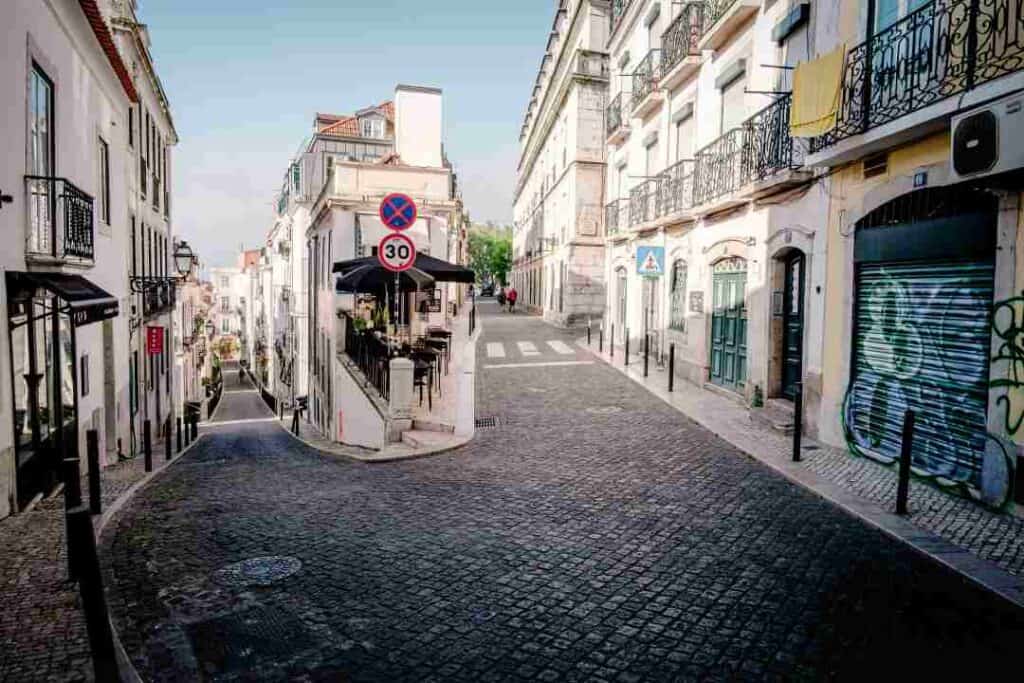
Alright, let me tell you about Chagas Hill, which is Lisbon’s ultimate party playground.
Located near the trendy Bairro Alto and Chiado neighborhoods, Chagas Hill offers a mix of traditional Lisbon architecture, stylish cafes, and boutique stores, drawing both locals and visitors who appreciate a chic yet laid-back atmosphere.
The area has become increasingly popular for its vibrant nightlife, which centers around intimate bars, live music venues, and hip cocktail lounges.
During the day, it’s all cute cafes and vintage shops, but at night, the neighborhood transforms into one big street party.
While it doesn’t completely match the frenetic energy of the Bairro Alto nightlife, Chagas Hill appeals to those looking for a more refined yet dynamic nightly experience. You’ll find cozy wine bars, rooftop spots with views over the Tagus River, and live fado performances around here.
Chagas Hill is also a cultural district home to historical landmarks like the Church of Nossa Senhora das Chagas, a beautiful and understated site that dates back centuries.
The neighborhood’s eclectic charm, combined with its stylish dining, historic bars, and nightlife scene, makes Chagas Hill an enticing destination for you if you are looking for both culture and leisure in Lisbon.
The mix of people here is incredible. You’ve got traditional fado houses where Portuguese guitar music will give you actual goosebumps, right next to modern bars where local DJs spin until sunrise.
And the street art – some of these murals are so good they belong in a museum.
6. Santa Catarina Hill: The Artist’s Paradise
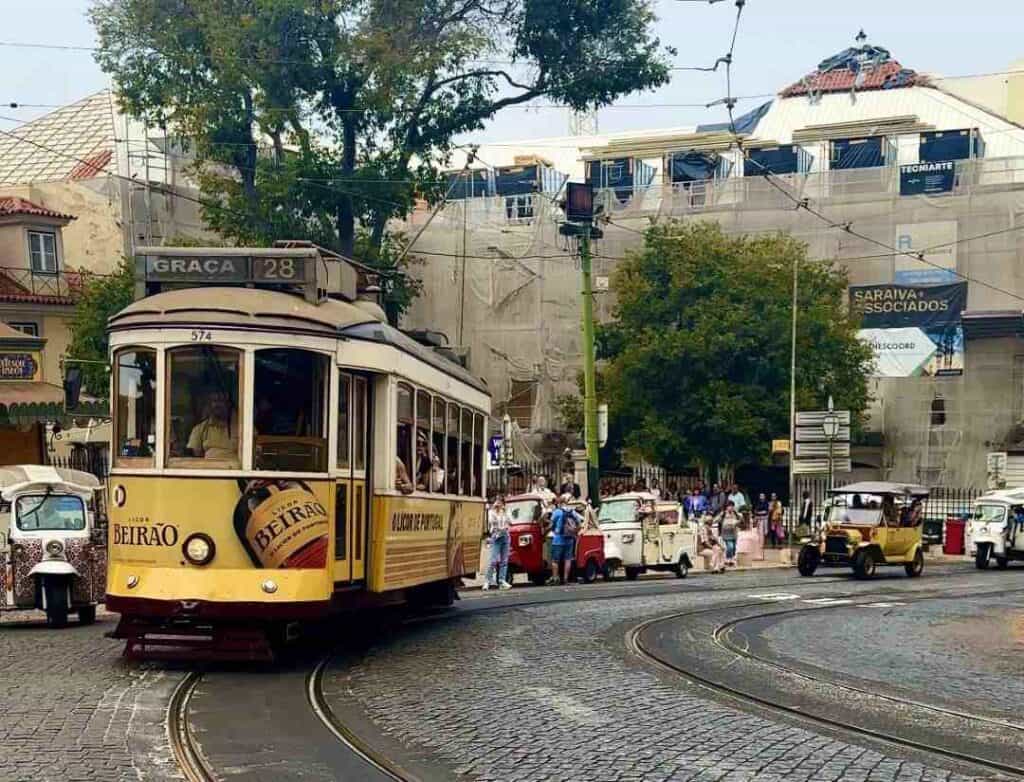
Santa Ana Hill has quiet, winding streets lined with historic buildings, traditional homes, and some hidden gardens. The area feels authentically Lisbon, with a peaceful residential vibe that contrasts with busier parts of the city.
This is an Artist Quarter, the kind of place that might make you want to quit your job and just become a struggling artist, too.
The Adamastor viewpoint here is legendary, officially known as Miradouro de Santa Catarina, and is one of Lisbon’s most beloved lookout points.
It’s named after the statue of “Adamastor,” a mythical sea monster from The Lusiads, Portugal’s famous epic poem by Luís de Camões. This sculpture overlooks the city and the Tagus River, symbolizing Portugal’s historic connection to the sea and world exploration.
Santa Catarina Hill is also home to old convents, small museums, and the iconic Hospital de São José, a grand hospital with architectural appeal.
The hospital was initially part of the “Real Hospital de Todos-os-Santos” (All Saints’ Royal Hospital), created to provide care for the city’s poor and sick.
The original structure had grand facades, arched doorways, and beautiful spacious courtyards. Inside, you can still see remnants of this, including historic tiles, grand staircases, and vaulted ceilings that give a feel of the hospital’s history.
This area is ideal for those wanting to explore Lisbon’s quieter, local side. Explore the cafe culture close to nearby cultural and shopping areas, this is a great place to wander and discover Lisbon’s layers of then and now.
The best time to come here is just before sunset, when everyone gathers with beers and guitars.
There’s always someone playing music, making art, or just living their best life. Riverside views of the 25 de Abril Bridge and the Christ statue are ridiculous, the perfect backdrop to a perfect end of your day.
7. São Roque Hill: The Sacred Heights
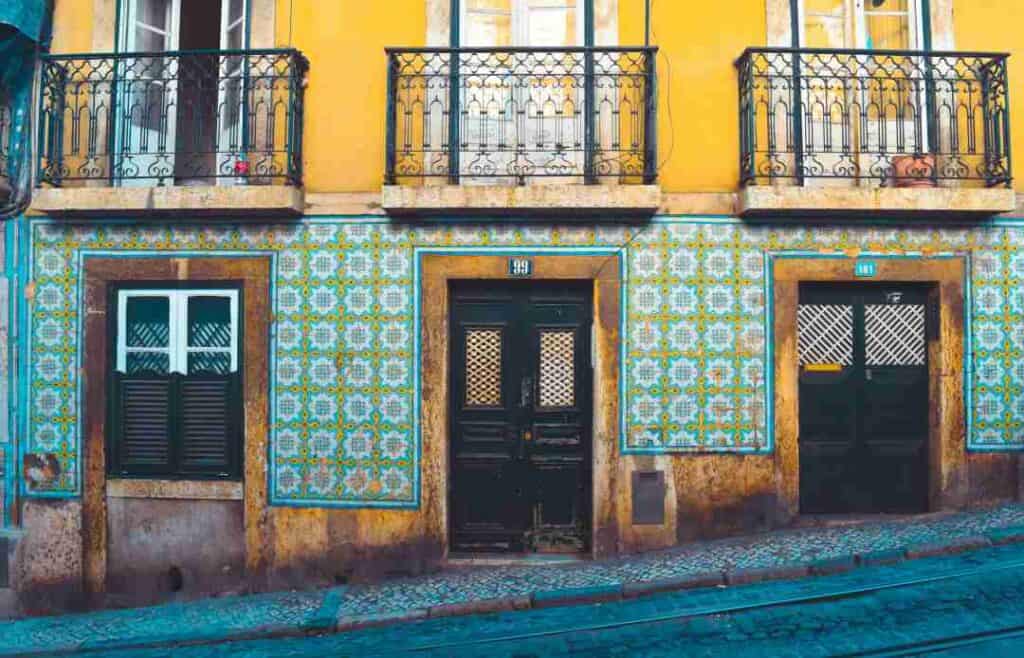
Last but definitely not least, we’ve got São Roque Hill, home to what might be the most underrated church in Lisbon.
São Roque Church (Igreja de São Roque) doesn’t look like much from the outside, but step inside, and you’ll be blown away.
There are gold leaves, precious stones, and intricate artwork everywhere, a religious heritage of insanely beautiful baroque architecture.
On top of this hill, you find the neighborhood Principe Real, a super nice area with lots of cool stores, restaurants, and bars.
The hill itself has a mix of religious significance, cultural landmarks, and social vibe – you’ve got your historic churches right next to some of the coolest bars and restaurants in town.
“Fun fact”: This hill used to be where they quarantined plague victims back in the day (cheery, I know), but now it’s one of the most happening spots in the city.
Side by side with ancient cultural sites, you find modern attractions of the kind where you can eat and have a brew. Some of the best bars in town are in this area.
The best way to tackle São Roque by foot is to start at the bottom and slowly work your way up, stopping at every miradouro (viewpoint) you find to catch your breath. Your legs might complain, but your soul will thank you.
You can also get here with a tram if you need a break from the thousands of city stairs.
Best Ways to Explore the Seven Hills of Lisbon
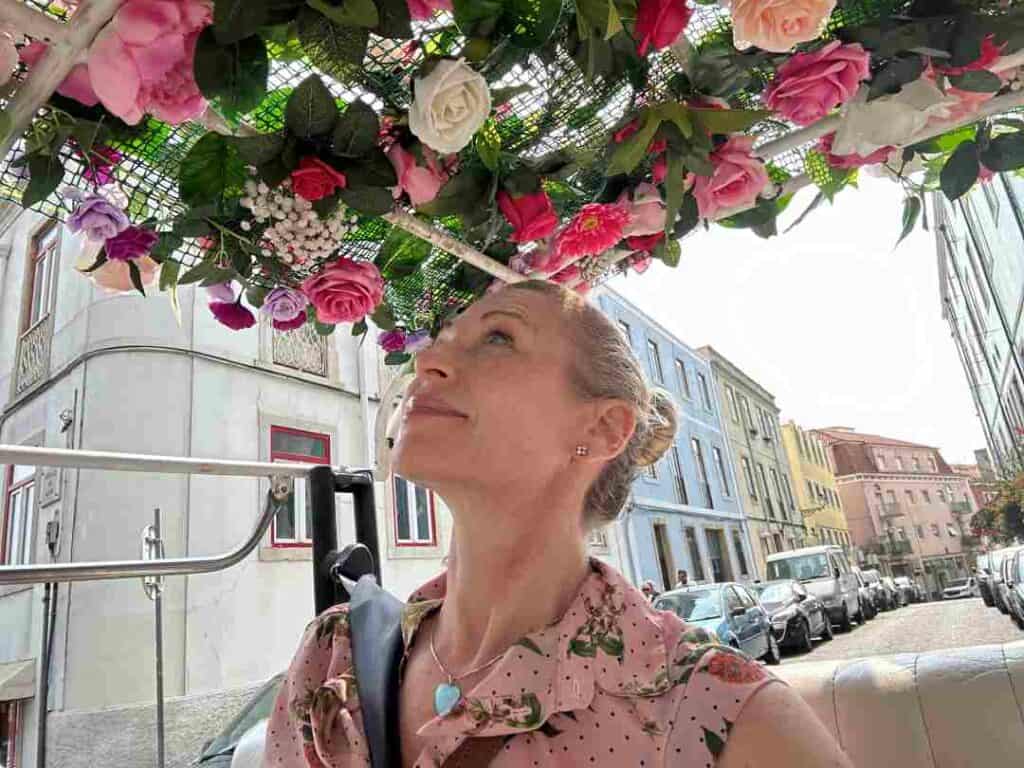
By Foot (For the Optimistic Brave)
Walking Lisbon’s hills is a bit like signing up for a free outdoor gym membership. But it really is the absolute best way to discover every nook and cranny of the city, slow traveling, so to speak.
You will stumble upon the cutest tiny shops and secret viewpoints that no guidebook mentions just because you took a “wrong” turn. Just remember those comfy shoes (those cobblestones are NOT high-heel friendly), water, and your sense of adventure.
Try to find zigzagging streets up the hills instead of going straight up, and if you need to throw in the towel, hail a flower-strewn tuk-tuk.
EpicNomadLife Tip: Join a guided walking tour! I did that and loved it (four hours of up and down, phew!) Totally worth it; the guides are fun and knowledgeable and will give you the Lisbon 101 in a few hours.
Flowery Tuk-Tuk Rides
These cute little cars are a bit tourist-trappy, but hear me out – a tuk-tuk tour with a local driver is like getting a history lesson, city tour, and private entertainer all in one.
Plus, they can squeeze through narrow streets and alleys where regular cars just dont fit. The tuk-tuks roam around everywhere, and you can hail one in the street.
They normally will have a “tour price” set to various durations, from around half an hour and up. Even if you just want to get from A to B, you can do it in charming style and with a guide! Best for small groups or those days when your legs are staging a protest.
Tram 28: The Yellow Time Machine
The historic tram 28 is the real VIP of Lisbon sightseeing. Although not super comfortable, this vintage yellow beauty rattles and creaks its way through the narrowest streets, somehow squeezing through gaps that seem impossible.
A fair warning, though, it gets packed with tourists around midday during high season.
My best advice is to be an early bird and catch the Tram 28 route somewhere before 9 AM or after 7 PM (and travel to Lisbon in shoulder season). Start at Martim Moniz and ride it all the way to Campo Ourique – once you are on it, you might not want to let your seat go!
Elevadores: Lisbon’s Historical Lift System
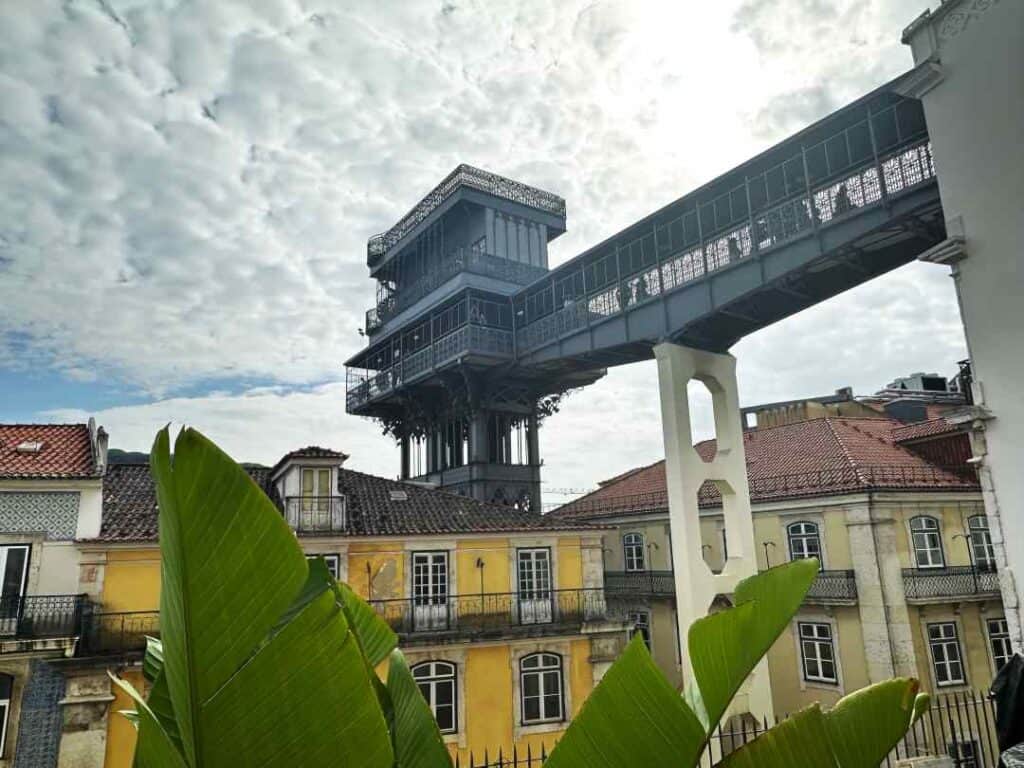
These funiculars are basically time machines disguised as transport. The Glória, Bica, and Lavra elevadores have been hauling tired legs up Lisbon’s hills since before Instagram was a thing.
My favorite is the Santa Justa Lift – yes, it’s touristy, but those wrought-iron details are gorgeous, and the view from the top platform is *chef’s kiss*!
EpicNomadLife Tip: Buy a 24-hour transport card; it includes the elevators and a lot more.
Uber/Bolt & Taxis: The Comfy Option
Sometimes, especially after that extra glass of vinho verde at dinner, you just need a car. Uber and Bolt work perfectly in Lisbon, and prices are pretty reasonable.
Local taxis are great too – just make sure they use the meter. Hot tip: save the FreeNow app on your phone; it’s like Uber but for regular taxis, and sometimes it’s cheaper during peak hours.
Electric Bikes & Scooters
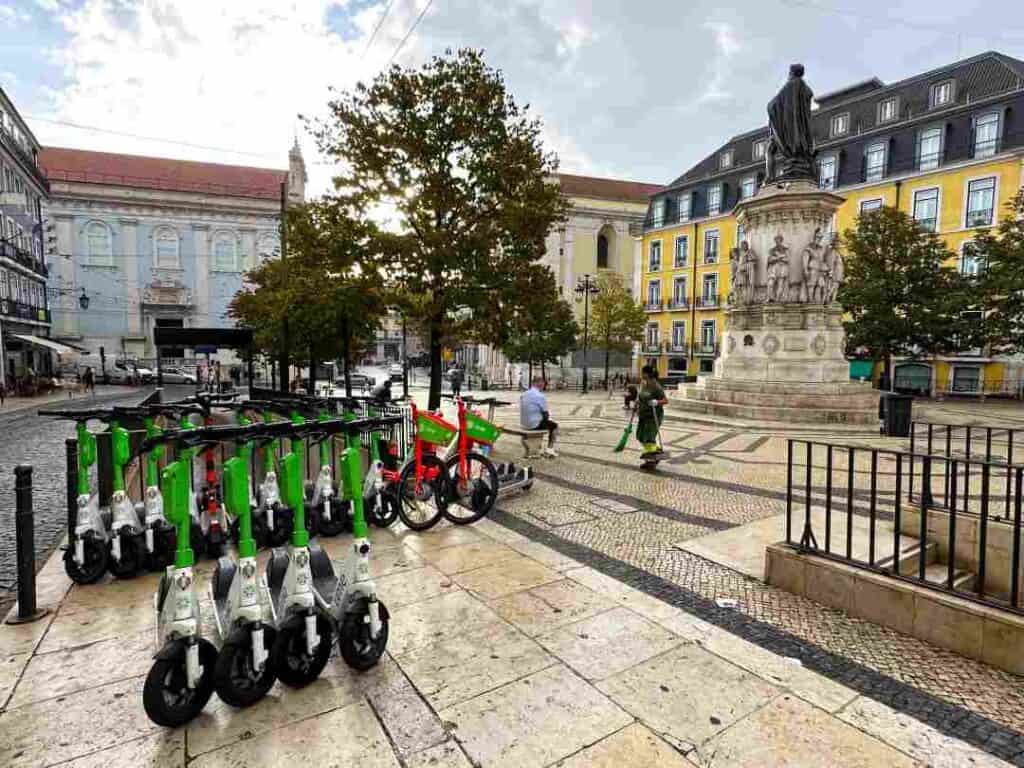
Lisbon has finally embraced the e-revolution, and thank goodness! Electric bikes from Gira (the city’s bike-share system) make those hills feel like gentle slopes.
Or grab a Lime or Bolt scooter – they’re everywhere. Just please, for the love of pastéis de nata, don’t ride these on the cobblestones after rain.
Hop-On-Hop-Off Buses
They’re not the most exciting way to see Lisbon, but on a scorching summer day, that air-conditioned top deck starts looking pretty good. Get on a Yellow Bus Lisbon somewhere on your route and get off wherever you like.
The Yellow Bus tour actually gives you a decent overview of the hills’ layout, which is a tiny bit tricky by foot (in a day). Plus, some tickets include boat rides on the Tagus. Hello, perfect city photos!
Metro For A Fast Track
While the metro won’t get you to every hilltop viewpoint, it’s a great public transportation option for covering longer distances between hills. It’s clean, reliable, and beautifully decorated with art.
The blue line from São Sebastião to Baixa-Chiado gives you a great starting point for exploring several hills. Bonus: all stations have escalators or elevators (your knees just breathed a sigh of relief).
About Lisbon’s Secret Doorways: The Public Elevators
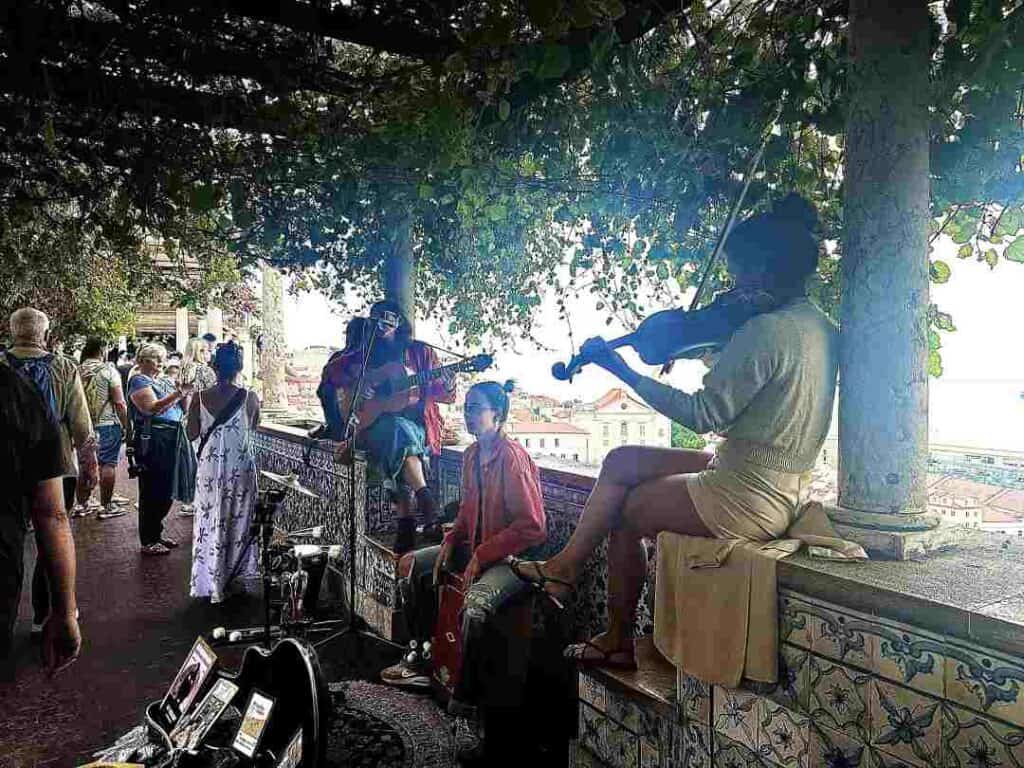
Here’s something most tourists miss: Lisbon has a network of public elevators hidden in buildings and between streets, as well as cool funiculars.
Take the time to find out where they are, and you will save yourself quite a few hours of uphill battle.
Don’t miss the Elevador Castelo, which connects Baixa to the castle area. They’re free with your transport card, air-conditioned, and usually not crowded.
The entrance can be hard to spot – look for blue “ELEVADOR” signs on buildings (If you join one of the Lisbon walking tours, the guide will show you all these hidden shortcuts).
EpicNomadLife Tip: Want to really connect with the hills’ ancient vibes? Head to São Jorge Castle at sunrise or the Miradouro de Santa Catarina at sunset.
Where to Stay In Lisbon
As Lisbon is such a popular destination for people from all over the world, there is no shortage of hotels and accommodation options across the price range.
Anything from fancy luxury Lisbon hotels to boutique accommodation, hostels, co-work & stay options, and homestays.
Practical Tips for Visitors
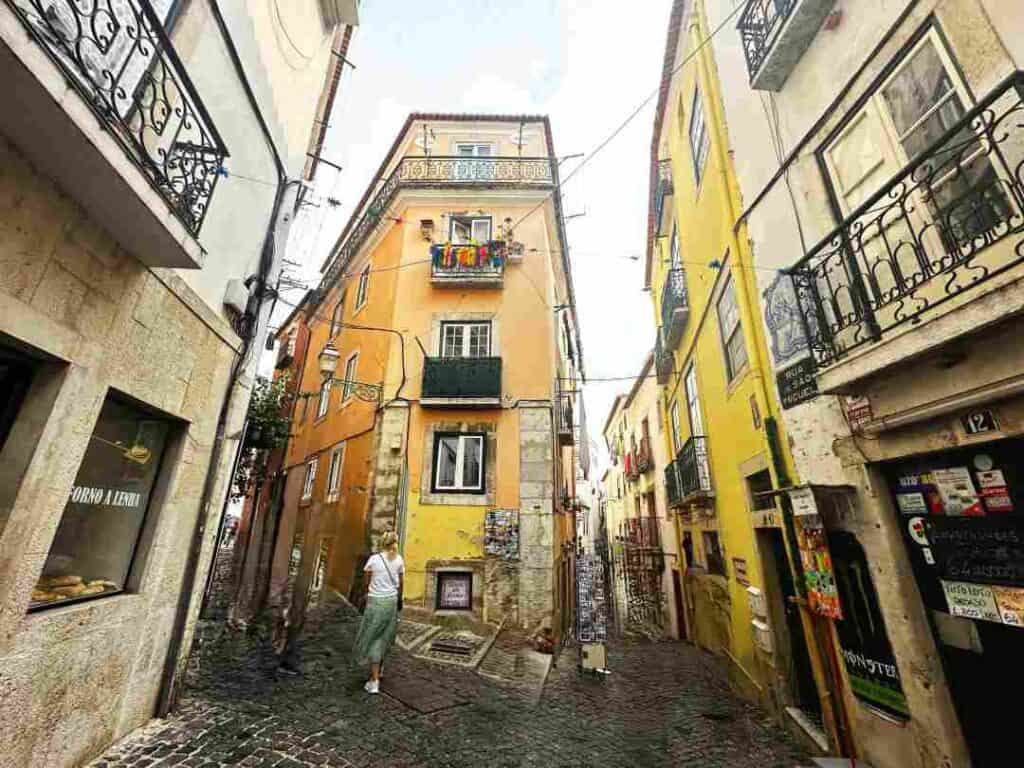
Packing Tips
Remember that Lisbon rewards the prepared traveler. Pack those comfy shoes, always carry water, and don’t be afraid to take the historic elevadores (and funiculars) – it is not cheating; they’re part of the experience!
Here is what you should pack for Lisbon Purtugal
- Again, bring comfortable walking shoes
- Dancing shoes (you need to try the kizomba)
- Light, airy (layered) clothing
- Warm weather or a jacket for shoulder seasons and winter
- SPF for summer
- Swimwear (you are not far from a sandy beach!)
- Bag with locks on pockets
- Waterproof pouch for your cell phone & credit cards
Best seasons to Visit
Summers in southern Europe can get really hot, but if your plan is to find the nearest beach, that might not be so bad.
If you want to explore, however, shoulder seasons are probably perfect for you. Less tourists and crowds, lower prices, fewer lines, and you will not be a sardin in a tin can for your stay.
You might also like December in Lisbon, when the city gets its “bells on”, with sparkling Christmas markets and that warm and fuzzy feeling!
Solo Female Travel to Lisbon
Lisbon is a fairly safe destination for solo female travelers. As I mentioned, I had no bad experiences of any kind either of the two times I traveled there.
But as any solo female traveler knows, better safe than sorry.
Do your research, choose top-rated accommodation, and watch your glasses of Vinho Verde; when in doubt, the answer is no. Listen to your gut, get a taxi if you feel it is a good idea, and ask locals for advice about your city district and nighttime considerations.
Accessibility Considerations Lisbon
Truth be told, with all the hills, cobblestoned streets, trams, elevadores, and stairs, Lisbon is not a great starting point as an accessible destination.
City transport is not tailored to wheelchair users, but if you are able to get yourself into a taxi/Uber, you will be able to get around regardless.
If you have some kind of special needs, it is probably a good idea to invest in a private tour or two and inform the tour operators what you need to have a rewarding experience.
For specific questions, you can check the website of the Tourist Information in Lisbon and contact them for travel tips if you need to.
Lisbon weather
Lisbon enjoys a mild Mediterranean climate, making it a year-round destination.
Summer (June – August)
- Weather: Summers in Lisbon are hot and sunny, with average highs around 28–32°C (82–90°F). Coastal breezes make the heat more bearable, but temperatures can reach 35°C (95°F) on the hottest days. Evenings cool down, averaging 17–20°C (63–68°F), creating pleasant conditions for outdoor dining.
- What It Offers: Summer is perfect for enjoying Lisbon’s beaches and coastal areas, day trips to places like Cascais and Sintra, and outdoor events such as music festivals, open-air markets, and rooftop bar evenings.
- Drawbacks: Summer is the peak tourist season, so expect more crowds and higher accommodation prices.
Autumn (September – November)
- Weather: Autumn brings milder temperatures, averaging 20–27°C (68–81°F) in September and dropping to 12–18°C (54–64°F) by November. Rain begins to increase in late autumn, but sunny days are still frequent.
- What It Offers: Autumn is a favorite for those seeking fewer crowds and comfortable temperatures. The mild weather is ideal for sightseeing, hiking in Sintra’s lush landscape, and enjoying Lisbon’s outdoor cafes. September and October are particularly pleasant, with many summer attractions still open.
- Drawbacks: Rain becomes more likely in November, so travelers in late autumn should prepare for occasional showers.
Winter (December – February)
- Weather: Winters in Lisbon are mild, with daytime temperatures around 12–17°C (54–63°F) and rarely dropping below 8°C (46°F) at night. Rain is common, especially in December and January, but there are also sunny, crisp days.
- What It Offers: Winter is the quietest season, ideal for those who prefer fewer crowds and want to experience Lisbon’s culture at a slower pace. It’s a great time for museum visits, food tours, and exploring Lisbon’s cozy indoor cafes. Christmas markets and New Year’s events add charm to the season.
- Drawbacks: Rainy days are more frequent, and outdoor activities like beach trips and rooftop evenings are limited.
Spring (March – May)
- Weather: Spring brings mild, comfortable temperatures with highs between 18–24°C (64–75°F) and cooler nights around 10–15°C (50–59°F). Rain decreases significantly, and sunny days are common.
- What It Offers: Spring is ideal for sightseeing, as the weather is perfect for walking tours, tram rides, and outdoor dining. The city’s gardens and parks are in bloom, and events such as Lisbon’s popular music festivals and street art fairs start to pick up.
- Drawbacks: Although it’s generally uncrowded, spring is gaining popularity among travelers, so March through May can be busier compared to winter.
Best Time to Visit
The best time to visit Lisbon is typically spring (March- May) and early autumn (September – October). These months offer comfortable temperatures, fewer tourists than summer, and a vibrant atmosphere as events and festivals are often in full swing.
Spring brings blooming gardens and pleasant weather, while early autumn has warm days with less rain than winter.
Summer is perfect for beach lovers and festival-goers who don’t mind the heat and crowds, while winter is best for a quieter, more budget-friendly experience that allows travelers to explore Lisbon’s cultural and historical sites at a relaxed pace.
FAQs For The Hilly City of Lisbon
Is Lisbon Safe?
Yes, Lisbon is generally a safe destination to visit, including for solo female travelers.
I walked around the city day and night, never had any bad experiences, and never felt unsafe, but you dont have to take my word for it.
Lisbon is considered one of Europe’s safest cities for tourists, and in global safety rankings, Lisbon consistently ranks highly for low crime rates and safe public spaces.
Portugal as a whole is recognized for its safety, with the Global Peace Index ranking it as the fourth safest country in the world in 2024.
Why Is It Called The City Of Seven Hills?
Lisbon is a super hilly city, which you will find out once you are there walking around the charming neighborhoods on foot.
The exact phrase “the seven hills of Lisbon” is a bit of a knock-off from the famous term “the seven hills of Rome.” True, there are many hills in Lisbon, probably more than seven if we are going to look closely at the map.
Due to its terrain character, Lisbon (and quite a few other cities) has kind of borrowed this term as a description of the city, which relies on both history and a few legends about the seven hills, the city, and Portugal.
Which Towns Are Built On The Seven Hills
There are a handful of other cities in the world that have followed the example of Rome (from its grand era) and are said to be built on seven hills.
These are Istanbul, Somerville, Newton, Sheffield, Providence, and the Massachusetts cities of Worcester.
Wrap-Up The Seven Hills of Lisbon
These hills have watched empires rise and fall for centuries and survived earthquakes that shook history.
After visiting this hilly capital twice, I still feel that there is A LOT to do here, and I am already planning to go back!
Hopefully, you have gotten a bit of the historical background on each of these “seven hills” that Lisbon is famous for, and a few extra bonus pieces of information as well!
See you in the slopey cobblestoned streets soon?
Related blog posts:
The 28 Best Things to Do Alone In Lisbon: A Comprehensive Guide!
The Ultimate Guide: Is Lisbon Portugal Worth Visiting (Solo)? (Spoiler: Absolutely!)
Luminous Lisbon in December: Your Ultimate Guide to a Festive Portuguese Getaway
